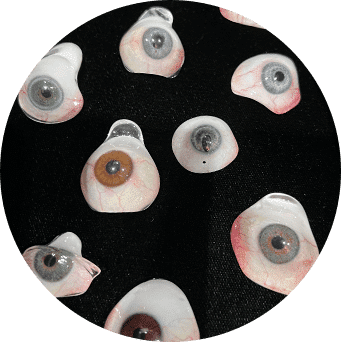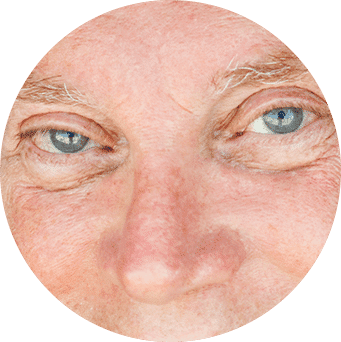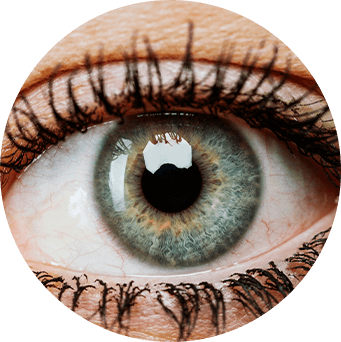Eye Concern specializes in bringing hope and confidence back into your life through our expert ocular prosthetics services. Our team of professional ocularists is here to guide you every step of the way.
From custom artificial eyes to scleral shells and prosthetic refitting, we offer advanced solutions tailored to your needs. Let’s explore how our services can help restore not just your appearance but also your sense of self.

Custom Prosthetic Eye Provider
We specialize in creating custom artificial eyes that are more than just a medical device. They’re a gateway to renewed self-esteem and functionality. Our certified ocularists work with precision and empathy to craft each prosthesis to meet your unique needs.
- Tailored to You: Each eye is custom-made to match your natural eye color, shape, and size, creating a seamless and natural look.
- Advanced Techniques: Using the latest techniques, our goal is for every artificial eye to be as realistic and comfortable as possible.
- Empowering Confidence: Our patients often report a significant boost in confidence and quality of life with their new, custom-fit prosthetic eyes.


Scleral Shell Provider
Scleral shells at Eye Concern are a transformational solution for those with discolored or misshapen eyes. Designed to cover and beautify, our scleral shells bring balance and beauty back to your appearance.
- Aesthetic Improvement: Scleral shells are crafted to cover imperfections, giving you a more symmetrical and appealing look.
- Custom Design: Each shell is individually designed to fit over your existing eye, optimizing comfort and a natural appearance.
- Restored Confidence: By improving the aesthetic appearance of your eye, scleral shells can help restore your confidence and self-esteem.


Prosthetic Eye Refitting Provider
Our prosthetic refitting services are available to anyone who has received a prosthetic eye from Eye Concern. It’s essential to keep your prosthetic eye comfortable and looking its best. You might need a refit if you’re experiencing discomfort, if the prosthetic eye no longer matches your natural eye, or if it’s been a while since your last check-up.
- Children who are growing might need adjustments more often as well, due to growth.
- At Eye Concern, we only refit prosthetic eyes made in our office. This ensures we know the exact materials and craftsmanship used, allowing us to make adjustments confidently. While we do occasionally make exceptions, our general rule is not to refit work created by other ocularists, as we can’t guarantee the materials or design used in those prostheses.
- We care for patients of all ages, always ensuring the best fit and appearance.

Advanced Techniques in Ocular Prosthetics
At Eye Concern, we’re always looking ahead, embracing the latest in innovative eye prosthetics technology. We believe in combining the artistry of our work with cutting-edge techniques to ensure every prosthetic eye is as lifelike and functional as possible.
Our state-of-the-art techniques allow us to create prosthetics that match your natural eye in texture, size, color, comfort, and appearance. This commitment to innovation means we can provide you with a prosthetic eye that looks incredible and fits seamlessly into your lifestyle.
Support and Guidance Through the Process
We know navigating the journey of getting an ocular prosthesis can be daunting. That’s why, at Eye Concern, our team is your partner in this journey.
From your first consultation to the final fitting, we’re here to offer support, answer your questions, and guide you through each step. We understand the emotional aspect and are committed to providing technical expertise, compassionate care, and understanding.
You’re not alone in this. Our team is with you every step of the way.
Enjoy a Future of Clarity and Confidence
Your prosthesis and well-being are our top priorities at Eye Concern. We’re dedicated to offering you the best in ocular prosthetics, from the latest technology to empathetic support.
Whether you’re exploring the option of an artificial eye for the first time or seeking a refitting, we’re here to help you regain your confidence.
Reach out to us today, and let’s take this important step forward together.
Take the first step to restoring your image.
Call our family-owned practice at (480) 962-5841
Schedule Consultation
Frequently Asked Questions
Can the Prosthesis be Fitted Over Any Type of Implant?
Absolutely! An added benefit of fitting by this very specific and exacting method makes it possible for surgeons to place special implants in the orbit at the time of eye removal. If such sophisticated implants are fitted by older, traditional methods, there can be danger of pressure necrosis and eventual loss of the implant; whereas, when such implants are fitted by the Modified Impression Method, the likelihood of comfortable retention is nearly one hundred percent.
How Long Does It Take To Fabricate the Prosthesis?
The procedure typically requires three appointments through the course of a week. If the eye socket is a very difficult one to fit, it could take an additional one or two days. While most other eye fitters take less time, we have found that far superior results are obtained by employing the Modified Impression Method.
Is the Prosthesis Expensive?
Past patients from many different states, and from foreign countries, will attest to the fact that, for almost every person, fine prosthetic work is indeed a priceless blessing! Our fees are standard and reasonable for the quality, craftsmanship, and amount of time invested in the designing of this caliber of prosthesis.
What About a Blind, Unsightly Eye or Phthisical Globe?
It is very common for a patient with an unsightly blind eye or phthisical globe to desire a comfortable “scleral shell.” With our exacting methods, this can comfortably and effectively be done providing the cornea is not overly sensitive.
What is The Process You Use?
Discover the process we use to create ocular prostheses that are comfortable, beautiful and appear to be living tissue.
We are frequently asked to indicate to a doctor or patient something about our acrylic eye fitting methods. We are more than happy to do so. There are several successive steps which we shall briefly describe here.
Adequate healing is required before fitting the acrylic eye. Schedule; permitting, We will fit the prosthesis six to eight weeks after surgery. Upon arrival at our office, the patient will complete a medical history form; which is the beginning of a record similar to any kept by a medical office.
1 – An impression of the shape of the space of the eye socket is taken with alginate, which gels in about 2 minutes to the consistency of the white of a hard boiled egg. Any discomfort to the patient is minimal. After removal from the eye socket, a two-piece mold is made using dental stone, a material very much like plaster of paris, around the impression.
Taking an impression affords us the opportunity to design an eye which provides total comfort in most cases and much improved motility. No more removing the eye several times a day, or even once a day. No more mopping up spilled mucous from the socket! No more red, painful tissue.
2 – After the dental stone has hardened, the impression material is removed. Molten wax is then poured into the mold and allowed to cool and harden. Upon removal from the mold, this wax piece constitutes a pattern (for the artificial eye) which can easily be changed in shape to improve the appearance and comfort to the wearer.
An acrylic iris-cornea, which approximates the patient’s own iris, is chosen and designed into the wax pattern. It can be removed and placed in a different position in the pattern in order to provide the proper direction of gaze, vertical and horizontal positions, the desired prominence to the artificial eye, and to provide the proper eyelid opening. This part of the fitting procedure can take as much as several hours, during which time the patient must remain available at ten to twenty minute intervals for trial fitting.
3 – When all the improvements have been made in the wax pattern, a new, final mold of that pattern is made, using dental stone, in a brass flask. The wax is then removed; however, the iris cornea is placed back into the mold in precisely the same position it had occupied in the wax pattern. A dough of white acrylic is then packed in the mold and processed under heat and pressure until properly cured.
4 – As soon as the eye is processed, an amount of the acrylic is removed from the front surface in preparation for the coloring. Veins (fine fibers of red embroidery thread) are then painstakingly placed over the surface of the prosthesis in such a manner as to duplicate the veining pattern of the companion eye.
The actual coloring of the eye is done with the greatest care to match the companion eye and to present an appearance of living tissue. This is done by a method devised in October 1976 and used exclusively by those few discriminating ocularists who employ the Modified Impression Method of making artificial eyes. The patient must be present for this part of the work for perhaps two or more hours. At intervals, the prosthesis being painted is placed within the patient’s eye socket, then removed and the coloring altered. This step is repeated using a special clear painting lens until the coloring is fully satisfactory.
5 – When the color is judged to be correct, the eye is returned to the final mold and a layer of transparent acrylic is cured on its front surface to protect the color during polishing and wearing. The finished, highly polished prosthesis is then placed in the eye socket and evaluated in all aspects. If it is not correct in every way, changes are made until it meets our quality standards.

